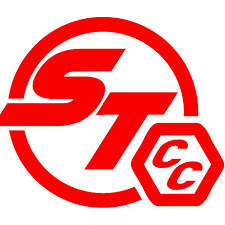Disc brakes in mass-produced road cars are approaching their 70th anniversary, yet despite decades of technological progress, their fundamental operation remains largely unchanged. From the Jaguar C-Type to the F-Type, the core principles of disc braking persist, a testament to their efficiency and reliability. However, when it comes to high-performance applications, conventional metal brakes face significant limitations. This is where carbon ceramic brakes (CCBs) emerge as the superior alternative, offering unmatched durability, reduced weight, and exceptional performance under extreme conditions.
The mechanics of disc braking are straightforward. Pressing the brake pedal activates a master cylinder that pushes fluid through the brake lines, engaging the calipers, which clamp onto the rotors and slow the vehicle. This process converts kinetic energy into heat, a necessary by-product. For everyday road use, traditional steel or cast-iron rotors perform adequately. However, under intense, sustained braking—such as on a racetrack—heat buildup compromises performance, increasing stopping distances and reducing braking efficiency.
Brake technology has advanced considerably since Bertha Benz experimented with leather pads in 1888. Modern high-performance vehicles now rely on carbon ceramic brakes, a remarkable evolution in braking materials. Unlike steel or cast-iron rotors, CCBs are crafted from a sophisticated blend of powders, resins, and carbon filaments. These components undergo an extensive three-week baking process, vastly longer than the 90-minute production time for standard rotors. The result is a lightweight, durable braking system with exceptional heat resistance, though at a significantly higher cost—ranging from $3,000 to $15,000.
CCBs offer substantial advantages over traditional brake systems. They reduce overall vehicle weight, particularly unsprung mass, which includes tires, suspension, and brakes. Lower unsprung mass improves handling, steering response, and braking efficiency. A front composite CCB rotor weighs between 15 and 17 lbs, compared to a hefty 26-28 lbs for its cast-iron counterpart. This weight reduction translates into enhanced acceleration, cornering, and stopping power.
Braking performance is another major advantage. CCBs have a higher friction coefficient than metal rotors, enabling shorter stopping distances—potentially reducing braking distance by up to 10 feet from 60 mph. However, the ultimate braking capability still depends on tire adhesion. Furthermore, carbon ceramic brakes are highly resistant to brake fade, a crucial factor in high-performance driving. Unlike traditional metal brakes, which struggle with heat-induced fading, CCBs maintain consistent stopping power regardless of temperature.
Durability is another key benefit. Standard cast-iron rotors typically last around 60,000 miles before needing replacement. In contrast, CCBs, thanks to their hardness and near-zero porosity, can withstand extreme use without warping or deforming. Under normal driving conditions, CCB rotors can last up to 200,000 miles, making them a long-term investment in both performance and reliability.
Although primarily found in high-performance sports cars, the advantages of carbon ceramic brakes are undeniable. Their lightweight nature, superior stopping power, fade resistance, and longevity set them apart from conventional braking systems. While their high cost limits widespread adoption, they remain the gold standard for those who demand the best in braking technology.
Surface Transforms plc (LON:SCE) is a manufacturer of next-generation carbon-ceramic brake discs for automotive and aircraft applications and has been certified to IS9001-2000 since 2008 and was certified to TS16949 automotive quality accreditation and AS9100C aerospace quality accreditation in 2015.

